Introduction: In the ongoing series on LA1K’s history, we have now come to the radio operations at the club. Similarly to the previous article where we also talked about radio equipment, this time we will go into more detail about the equipment we use on portable trips, which has become quite a large part of the club’s activity on the air in recent years! Incidentally, the anniversary for the 100-year commemoration of ARK took place at the Studentersamfundet in Trondhjem on the 6th of May, 2023, thanks to all who attended! We will get more into the anniversary later in the series.
In memory of Roy Almedal LA5KO
Contesting
It would take a few years before ARK were serious about competing in radio contests. The early years of the club’s formation were affected by a move from NTH Campus to the newly built Student Society in Trondheim in the late 1920s, dishevelled antennas and poor communication between old and new members in the 1930s, and a little thing known as the World War II in the 1940s. We probably had heavy QRN the first thirty years as well, if we’re allowed to boast our self pity a little more. It was only in 1956, when LA1K bet big on the so-called “American Contest” that we became the best Norwegian station. “A position we often achieve on the rankings”, a rather smug line, reads from the anniversary book of 1975.
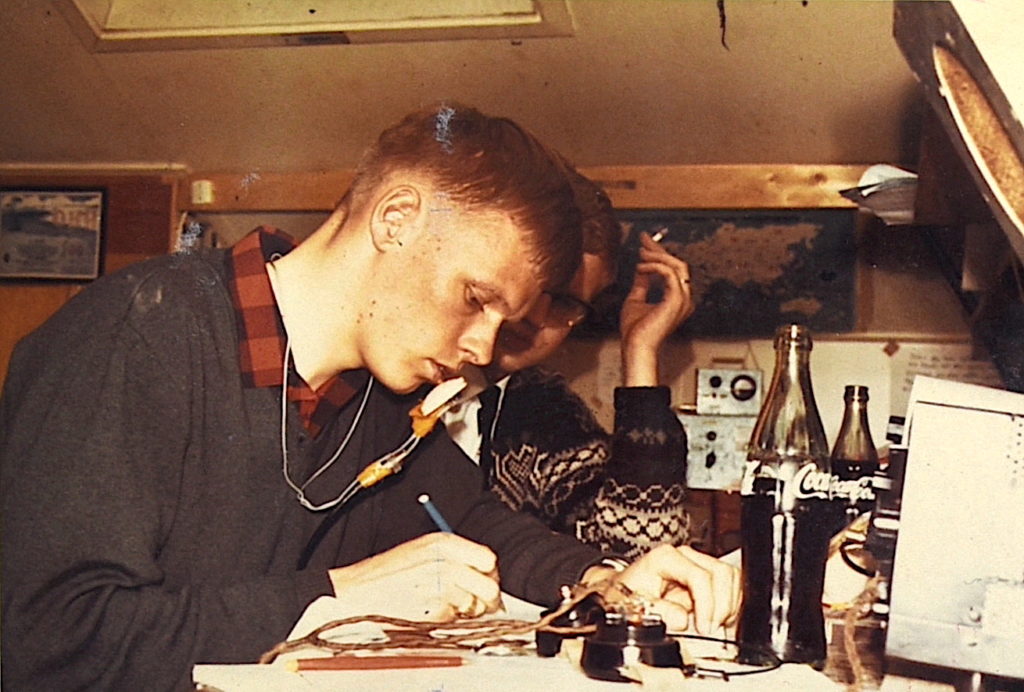
From the left: LA3LY and LA1HL
Before the “NRRL National Field Day” was first organised in 1992, it was the “NRRL Fylkestest” (County Contest, a CW-only contest) that was the important Norwegian contest to win. If not a victory, at least a better rank than LA2T, the Trondheim division of NRRL. This contest was first won by LA1K in the mid 1960s, and from the 70s to the mid-90s the club had its heyday. A number of trophies are still in the clubhouse, several of which were only supposed to be temporary.
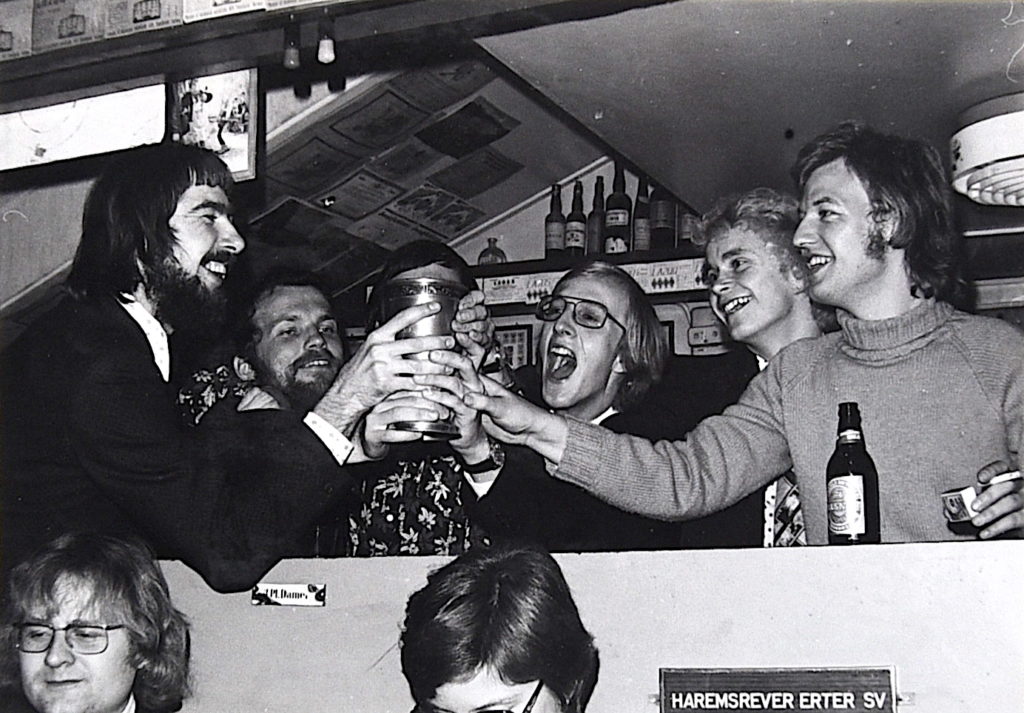
From the left: LA7SP, Tom, LA1FR, LA2QQ, Eli, LA1CU, LA3BD and LA9BT
Our clubhouse at the Student Society has never been the most desired place to book for contest participation. It is no secret that the Society is a social meeting place at weekends, of which ARK’s clubhouse becomes a social hotspot for large parts of the contest time. The noise-cancelling technology of the 60’s didn’t have much of a chance to begin with, and today it doesn’t fare much better. Even if you reserve the premises for radio use only, you cannot escape the fact that the rest of the building is open, and a sound technician will soon come running in, complaining about the interference on the sound systems below.
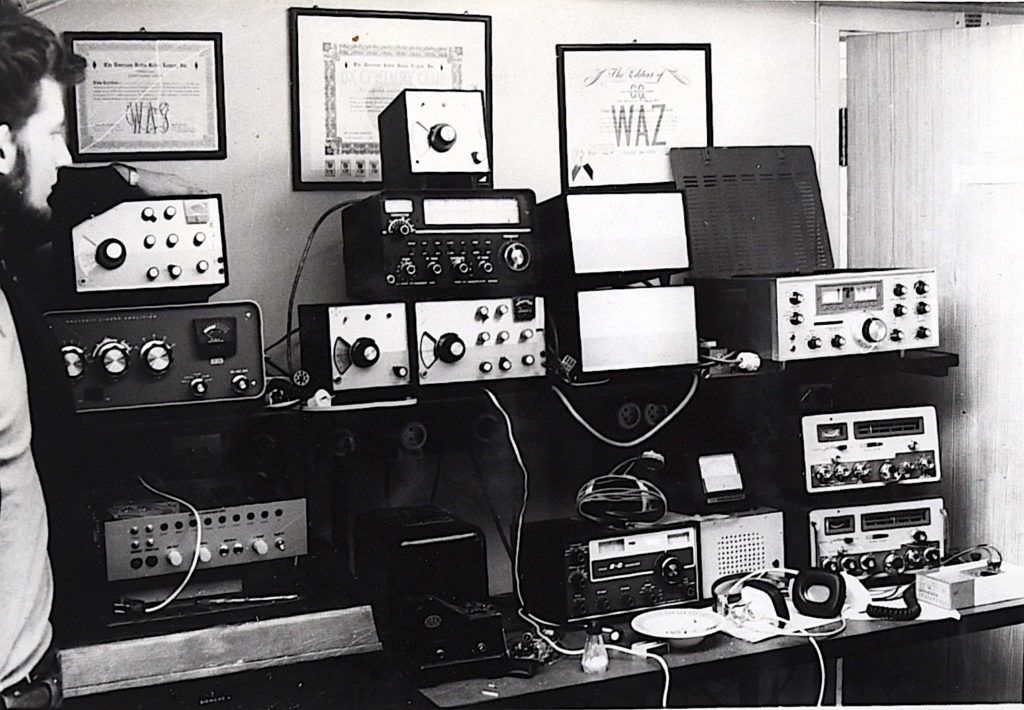
At the end of the 60s, temporary contest stations were therefore set up at NTH Gløshaugen to participate on all the major radio contests. Before this, transmissions had almost exclusively been from “Cassa Rossa”. Gløshaugen was located at a higher elevation, and as the “Central Buildings” were erected, it would be possible to mount antennas even higher than ever before. In the first years however, things did not go as anticipated. In 1970 and 1971, LA1K was disqualified in the County Contest for not following the rules carefully (of course highly debated), and in 1972 the station was approached by a frequency inspector during a contest, on behalf of none other than the year’s organiser, LA2T. Again, there was a disqualification for transmitting with too much power, and anger ensued. It is said that the following year, new strategies were practiced (one of which were locking the doors), and the victory deservingly came our way, without anyone knowing exactly why.
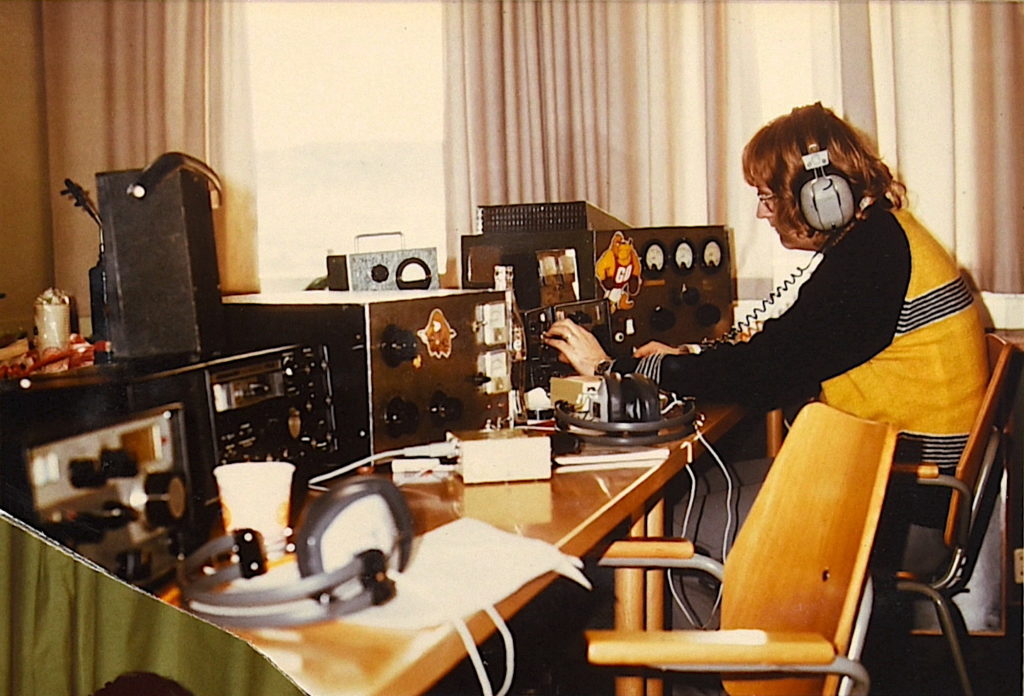
Pictured: LA7SP
The biggest international contest, CQ WW SSB, takes place every year in the last week of October. In Trondheim, the cultural festival UKA is organized by the Society every odd-numbered year, also in October. The climax of the entire festival, you guessed it, also happens to land on the last weekend in October each time. With this in mind, plans were made to go all in 1988, 1990 and 1992, with decade old, graduated member, Roy LA5KO in the lead. Running stations were set up on all the bands and listening stations were set up on almost all them. The listening stations were responsible for finding possible contacts, and it was heavily focused prioritising new, missing countries for the log. This led to great success and LA1K won in both 1988 and 1992. It is perhaps not so surprising that the contest station LN8W, where Roy LA5KO was also a major contributor, would start dominating on the Norwegian rankings for international contests in recent years.
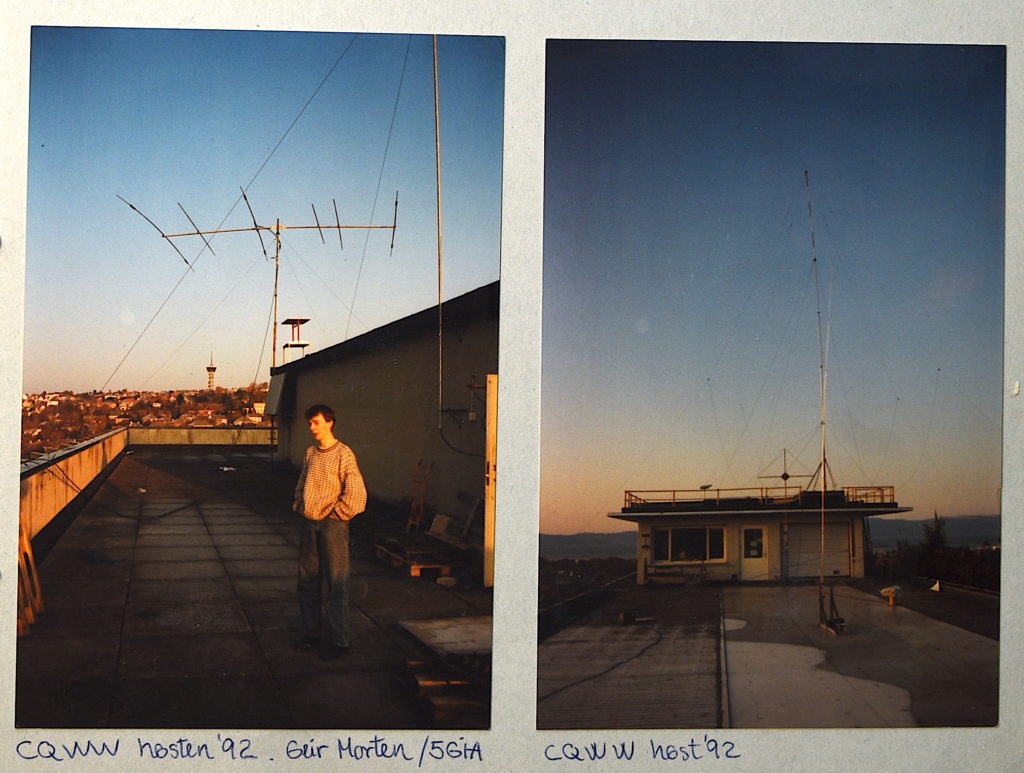
“The Otter”
A little depper into the early 90s, “Oteren” (The Otter) was created, a technical device that made it possible for the club to run a double set of transmitters and receivers in two locations. This was highly desirable as the receiving conditions at the Student Society were characterised by a lot of noise at the time. It was very common in the the club to think of it as slightly long key paddle and headset cords.
The cable we leeched of, which was laid between the NTH campus and the Society building a few years earlier for other purposes, was connecting the whole operation together. Although it was necessary doing some switching to get the cable all the way through at both ends. This cable was basically what was “the otter”, while the associated equipment at each end was called “the otter’s tail”.
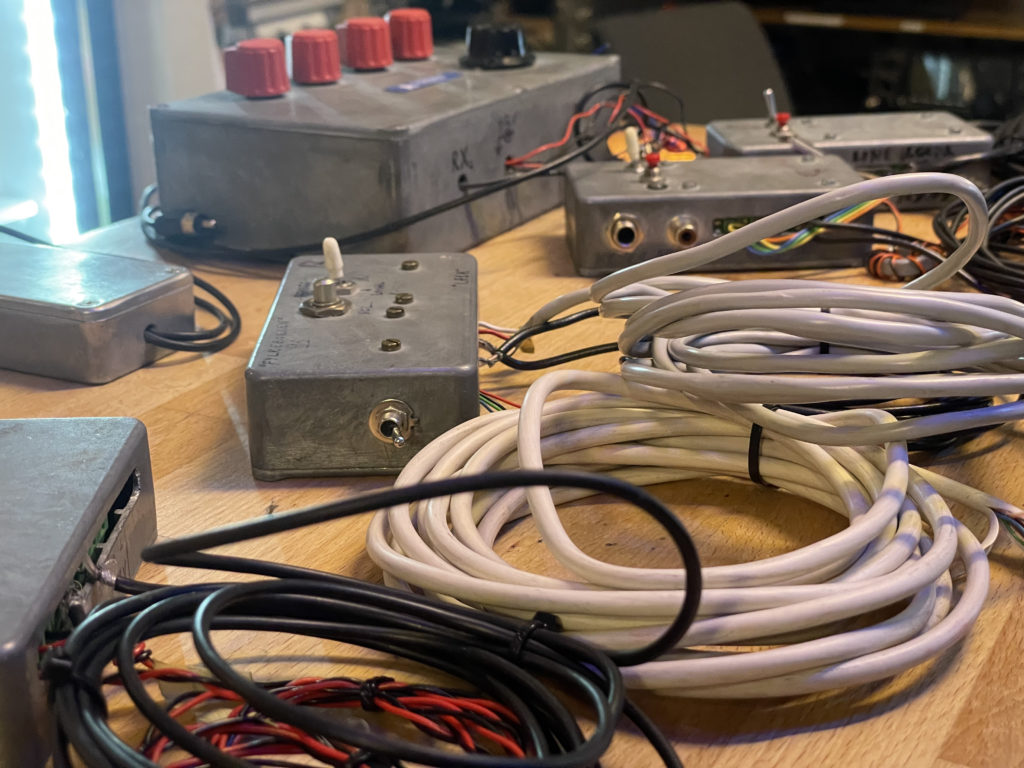
Photo: LB0VG
The setup consisted, among other things, of an audio switch with 4 volume knobs, where a radio assistant dubbed, “split-brain”, used the two in the middle and the operators at the radios had one on each side. Split-brain then had the 40 m station on one ear and 80 m on the other and each of the operators had a smaller box to switch between their own radio and the one down at ARK. The listening operators down at ARK found stations we had not yet run on each of the bands and tuned the radio down at the clubhouse to the correct frequency, signaling that they could now be run. The rig was comprehensively developed by ARK, and clearly shows the joy of creation in the club and the eagerness of the members. The set-up probably forms the basis for and is probably not too far from what is known today as remote stations, with antennas and rigs placed strategically for optimal transmitter and receiver conditions.
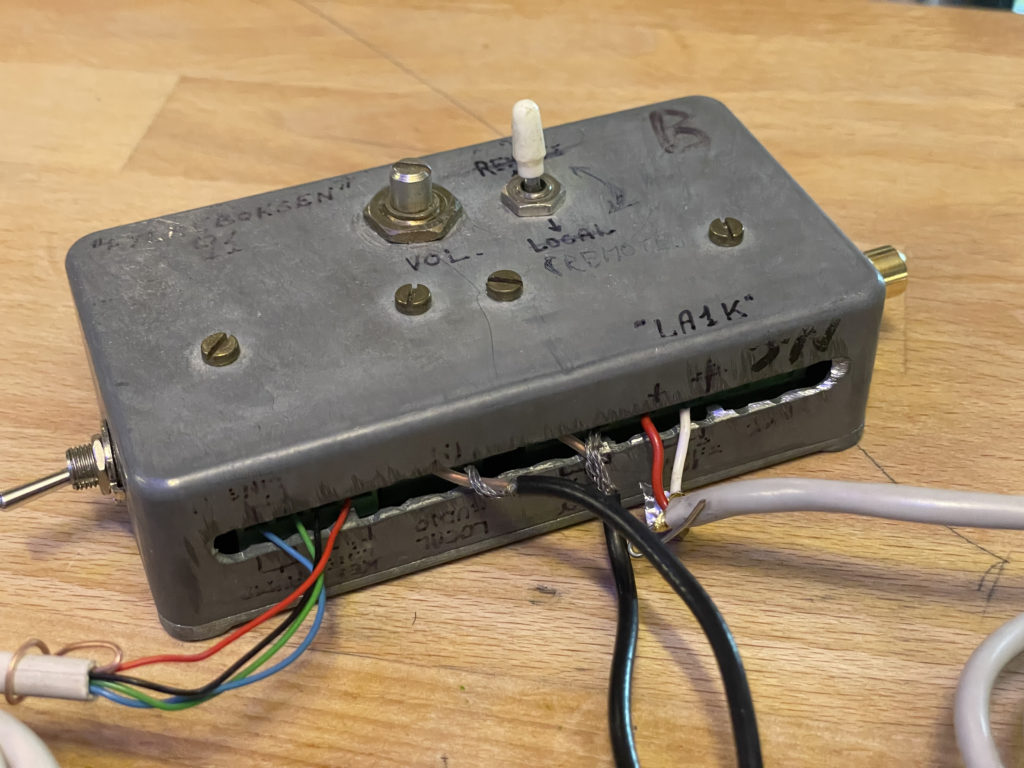
Photo: LB0VG
In today’s competitive climate, LA1K has not been pushing it’s hardest to win contests, but there is still a chance to achieve good results if you plan ahead. During Easter of 2022 under the lead of LB9WI, LA1K participated with a fully manned station continuously during the OK/OM contest and came away with first place in it’s class. Quite sporadically, this weekend would also turn out to bring up one of the older traditions in ARK, as losing the NRRL County Contest naturally had to be punished by painting the workshop floor. With so many members gathered, a task was started and the floor was painted, even before the results of the county test came to back. We later found out that we lost it regardless. Not so surprising considering that we only participated with one CW-operator. There is a small group of members that occasionally tries to learn morse code, but unfortunately the amount of operators on CW has drastically dropped since the requirement to obtain a radio license was dropped over 20 years ago.
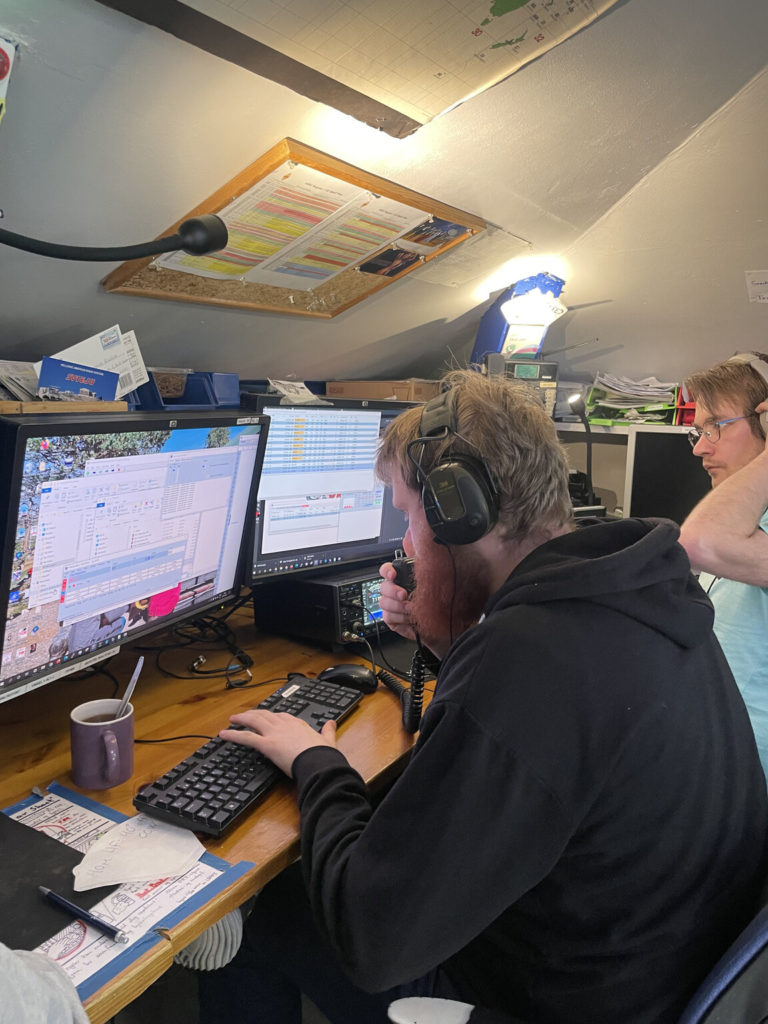
LA1K/Portable
Another area in which radio interest maintains an incredibly high level of activity are the portable trips. Other than meeting up at the clubhouse and using the radio from there, the trips are somewhat of a lower participation threshold and many of the club’s new members are happy to join in on. It is perhaps not so surprising that many of the club’s members get their start on the radio this way. ARK has two admission periods during a calendar year. In the fall, just before the NRRL Field Day, and in the spring, where we’re not participating on any contest but go on a portable cabin trip. There is a lot to say about Field Day, but we will get into that in more detail in a later edition of the series.
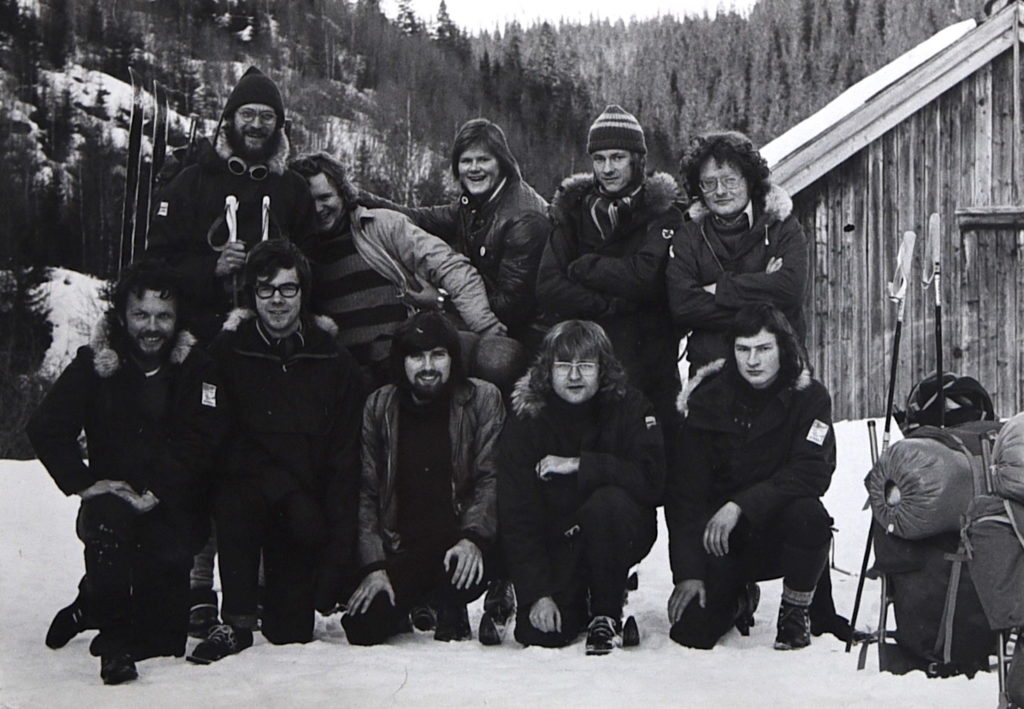
From the left: LA1FR, LA9TT, LA4FR, LA5KO, LA1BP, LA2ZT, LA7SP, LA5PO, LA9IN, LA7CQ
On the excursions it is usually our Yaesu FT-891 transceiver, together with a Heathkit HFT-9A tuner that gets the largest share of the QSOs. It is an easy radio to use, and with our 20m vertical antenna there are rarely any portable trips that are organised without these in the backpack. Recently, it’s the Summits on the Air (SOTA) program that has provided the most engaging radio field trips for our members. A year ago, a Yaesu FT-857D was purchased to contribute to our portable shack. The radio has unfortunately suffered the same curse as the Kenwood TS-2000 in ARK’s shack in recent times. The curse in the sense that people don’t understand how the panel is laid out in less than 2 seconds and give up using it. Later, an LDG automatic ATU has also been purchased, perhaps to compensate for the previous point.
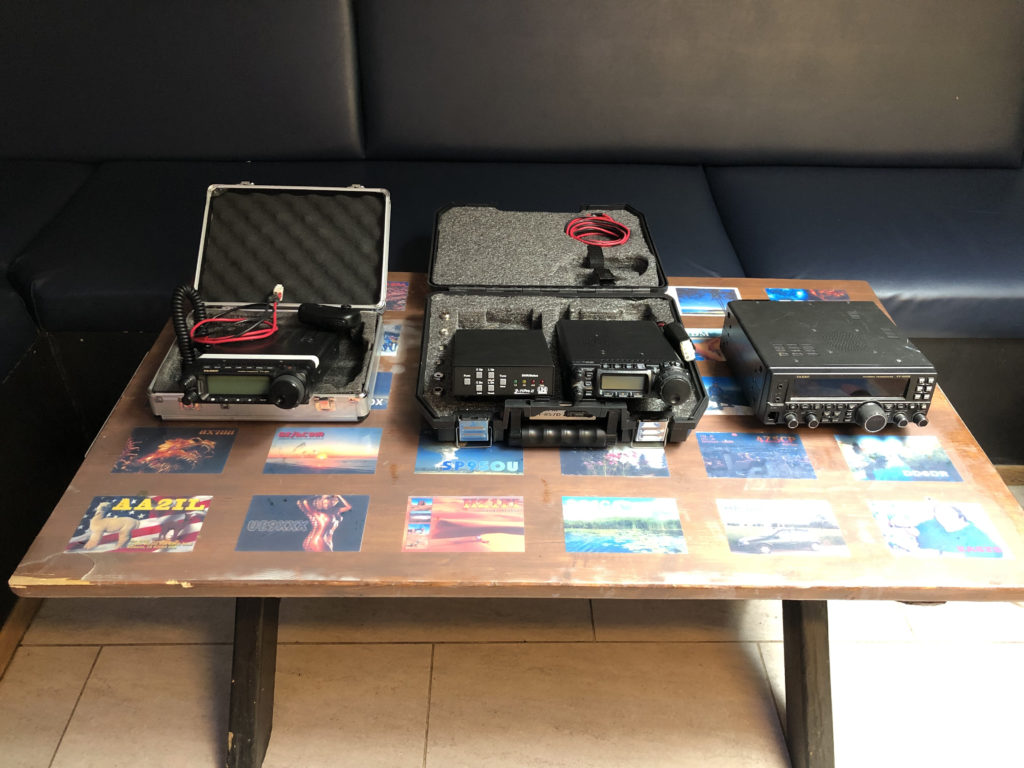
Below is one of the club’s QSL tables, notice any “dirty” cards?
Photo: LB5PI
After a generous donation from LA1DI last year, the club also received a good deal of new equipment, of which a Yaesu FT-450D, a radio that is also privately owned by several of the club’s members. Some of the co-authors can confirm that it is an extremely easy radio for portable use! Incidentally, it was brought to good use at the cabin trip with the new members this spring. We split into 3 different teams, with 3 different radios, tuners and antennas, and set off in different paths. Here we learned how important it is to beat the other teams in the card game UNO, to pick the equipment we want to use first, but also how capable we can become of using equipment we’re not necessarily very familiar with.
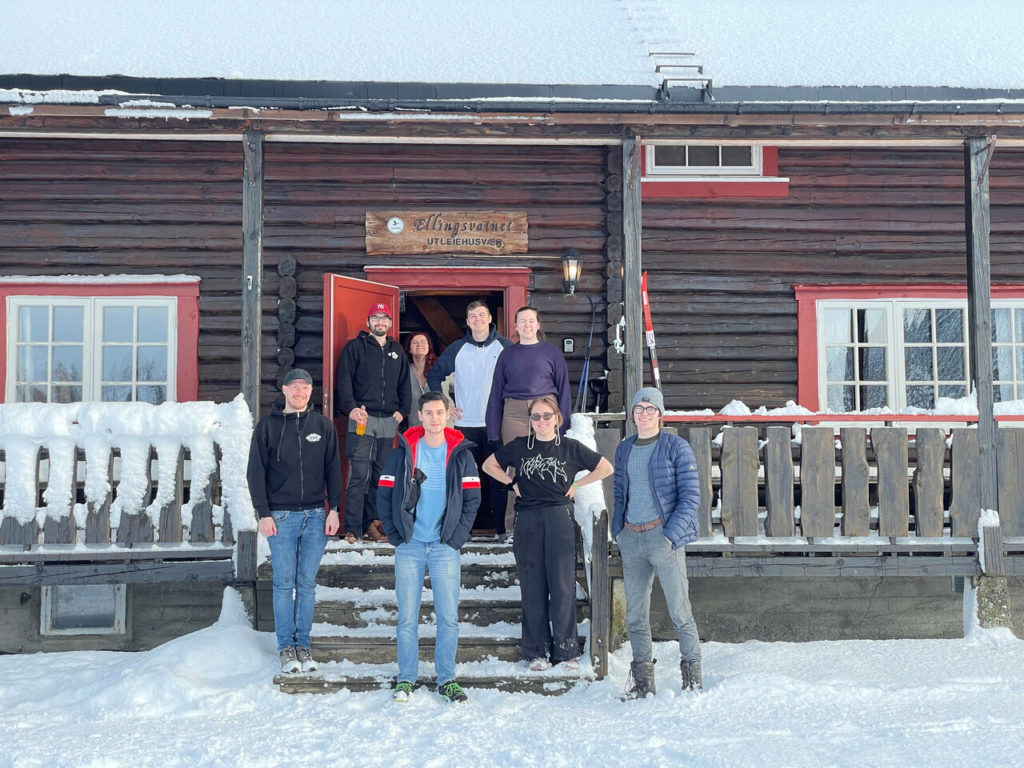
From the top: LB5PI, Tári, LB7JJ, LB9WI, LB8LI, LA1Q, Amanda I. and Emil J.
Photo: LB0VG
Another exciting part of portable radio is the experimentation with antennas. All the antennas we use are made by members, preferably made together with the newly admitted. It’s a nice introduction on how to use the club’s workshop and solder together some spaghetti-wiring to be able to communicate internationally. The newest antenna in use is a multi-band inverted V, doublet antenna, but a project has also been initiated to create a portable 4 square setup. In addition, it is also fun to mention all the different things that can also be used as an antenna. Some examples to note are the decorations for ARK’s Christmas tree, in addition to the flagpoles on the roof of the building, where a QSO with portable equipment has been confirmed.
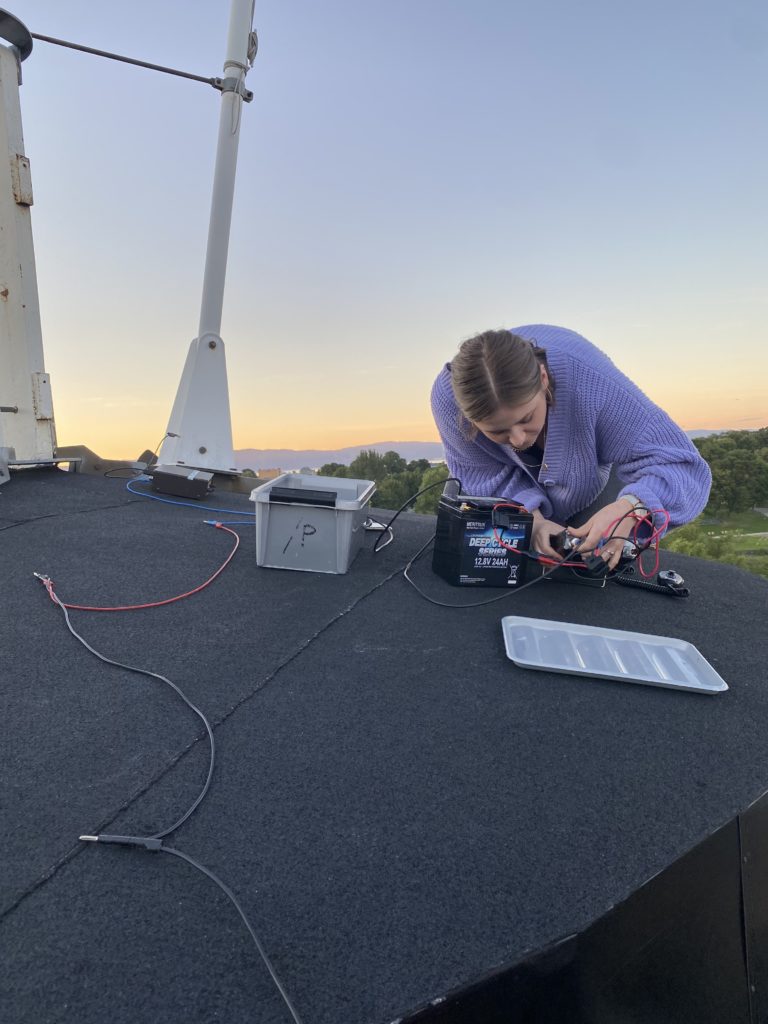
QSL-cards
With over 100 years and counting, ARK has also managed to amass a good collection of QSL cards, as any respectable radio club should! At the moment, the cards are stored in our storage room, together with soda, chocolate and lots of empty bottles that should have been recycled a long time ago. In the past, many of these cards were hung on the wall as decoration, but with the help of Xerox machines, we can safely decorate without feeling worried that they will disappear. The clubhouse also consists of two tables decorated with QSL cards, covered in epoxy, and once upon a time you could find the more explicit cards on the toilet, dubbed “Radio-dassen” (The Radio Toilet). There’s a vast number of possibilities if you want to get creative!
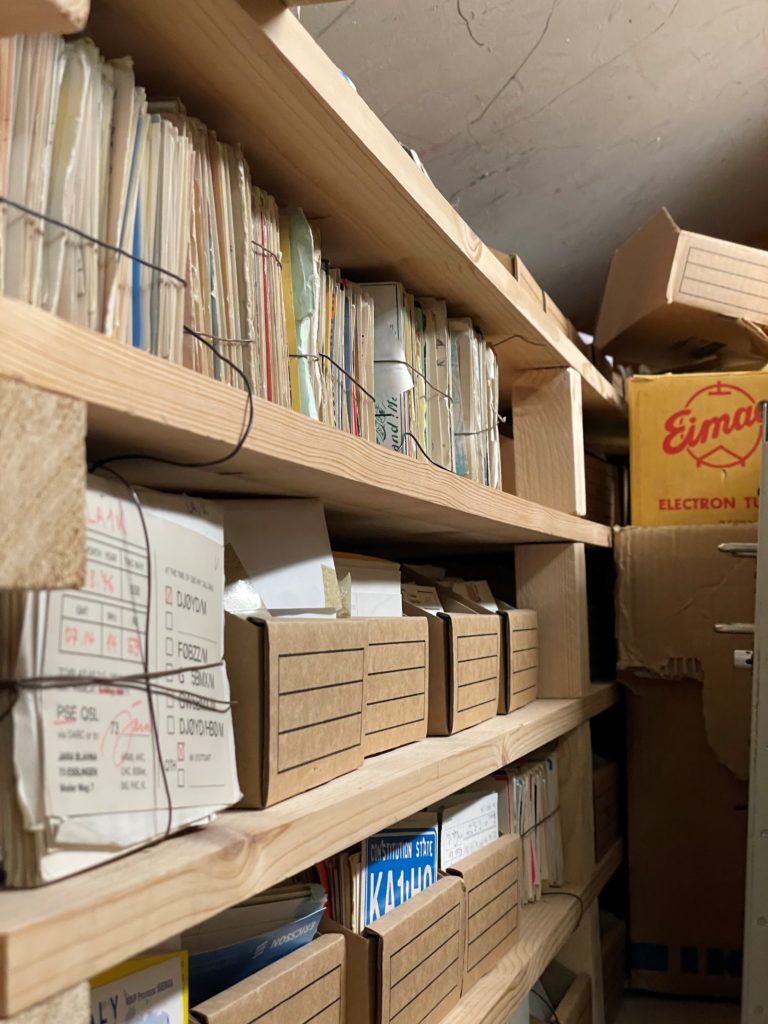
Photo: LB0VG
There’s also been an ongoing process to digitise all the QSL cards in our archive. LB1HH has taken on large parts of the scanning project, which currently consists of up to 9,400 cards that have been scanned into digital formats, with an uncertain estimate of how many remains to be scanned. It is perhaps a bit ironic how eQSL cards that arrive in our email are not treated with as much respect as the cards we ourselves scan from paper format.
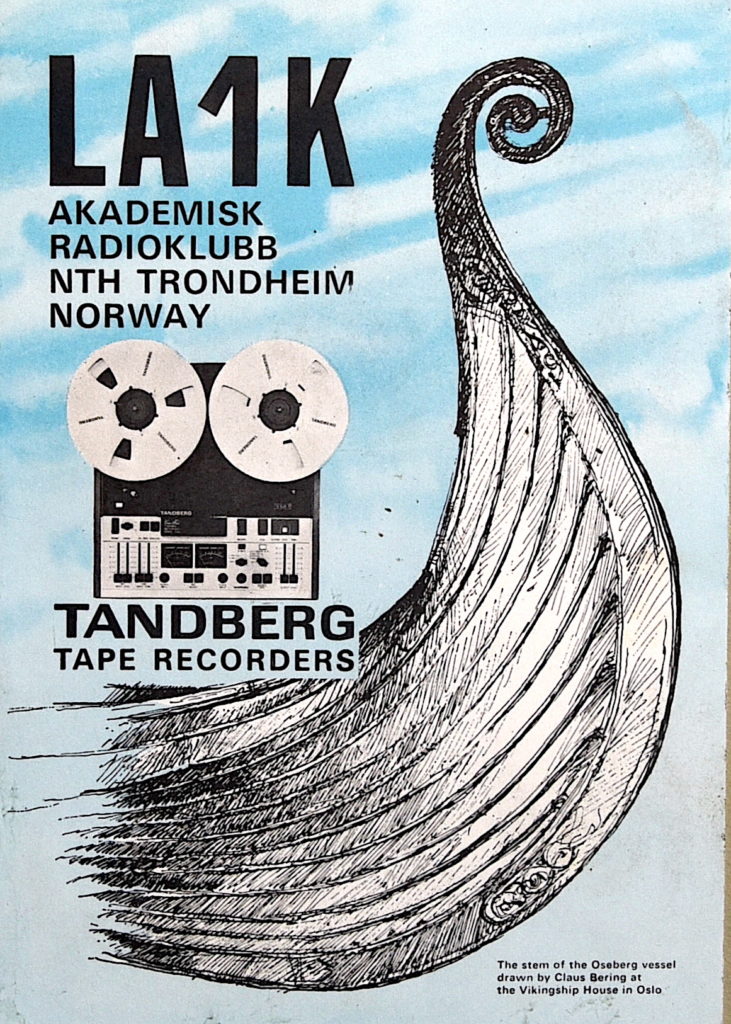
In connection with the writing of the anniversary book for our anniversary, we found out that we did not have many of our own issued QSL cards from the earlier years. As a result, many of our older cards have been shamelessly downloaded from listings on eBay. We hope that this will not be a problem going forward, as we have archived the layout of the modern cards. For a club with several callsigns for special use and anniversaries, we are currently issuing cards for the callsigns: LA1K, LN1K, LI1K, LA1UKA, LM100UKA and LA100K. One of the arguments for not running with the “LN100K” in international competitions during the anniversary year has been, “…then we have to make another damn QSL card!”
Featured image details:
Caption: Workshop, 1966
From the left: Bård, LA7WL, LA2UI, LA5JJ
– Heidi LB9WI, Kristoffer LB0VG and Sondre LB5PI
Article first published in “Amatør Radio”, June 2023
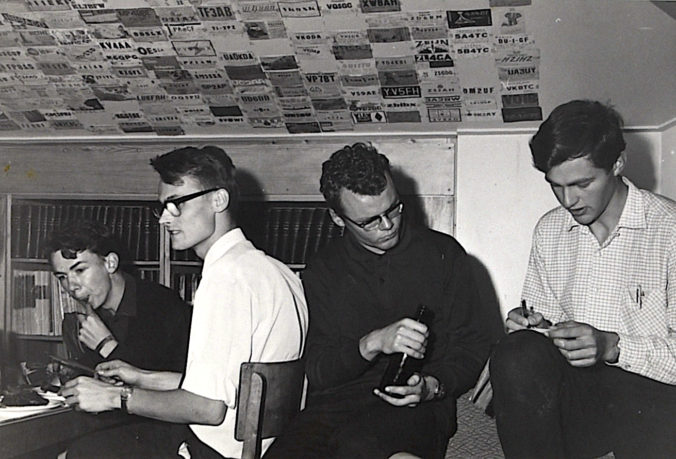

Leave a Reply